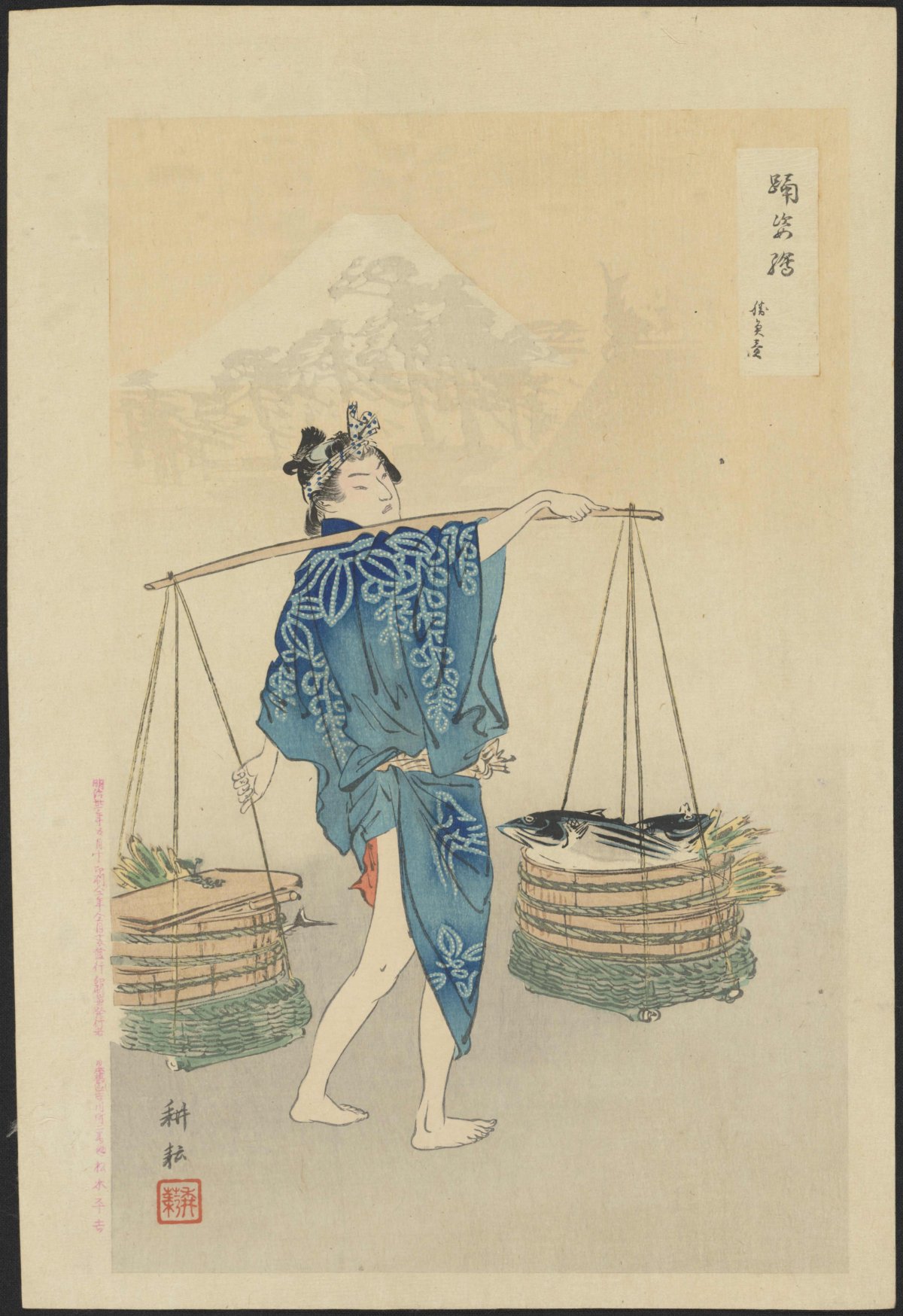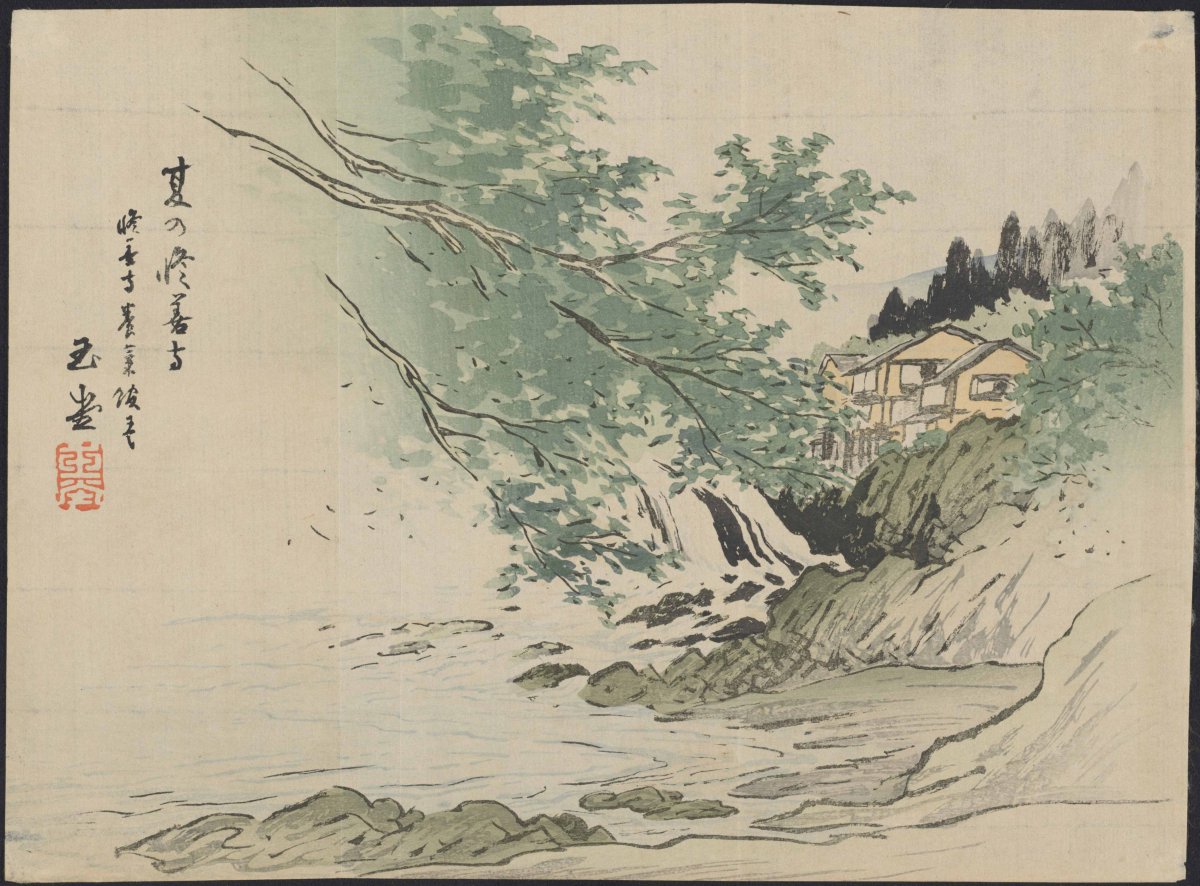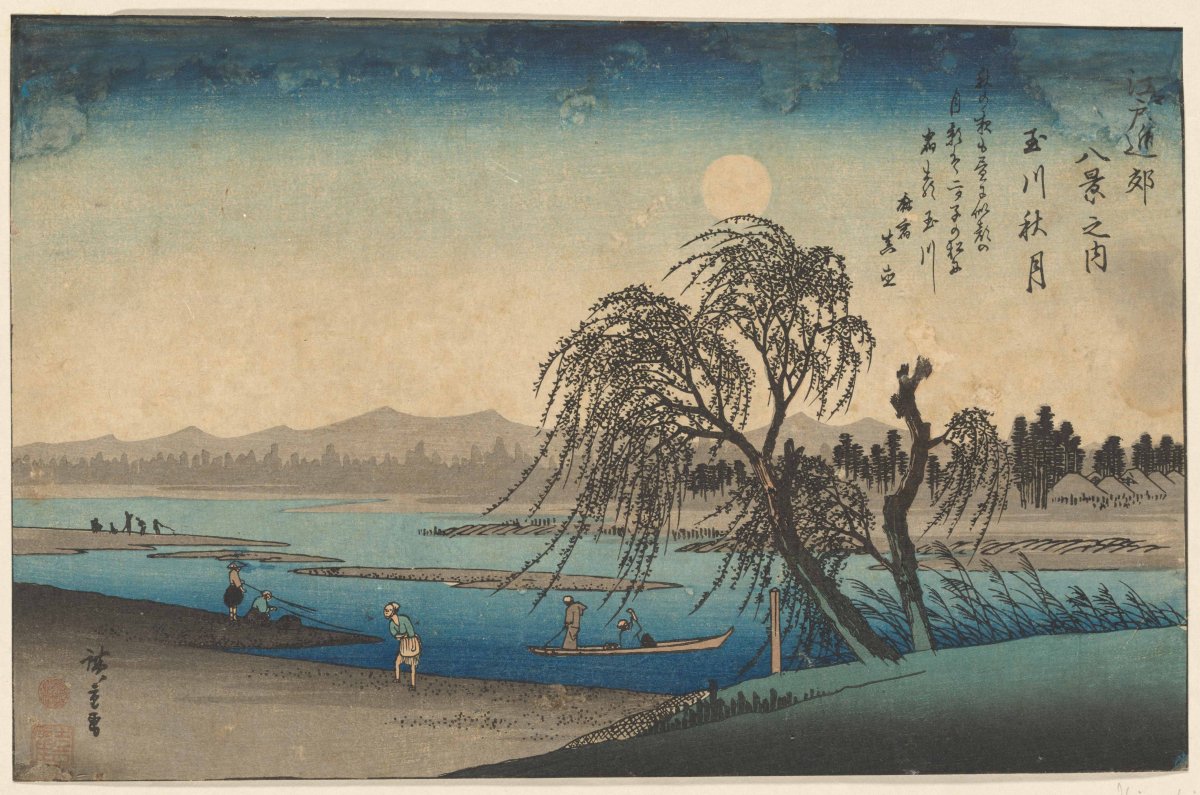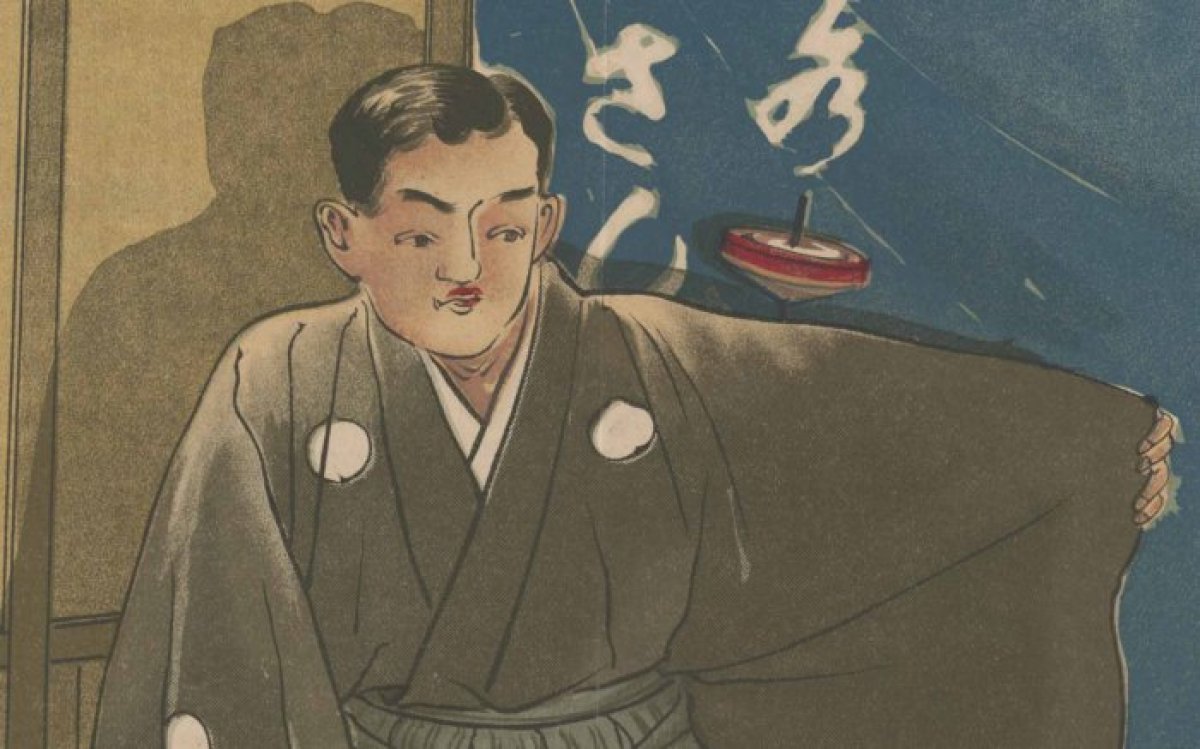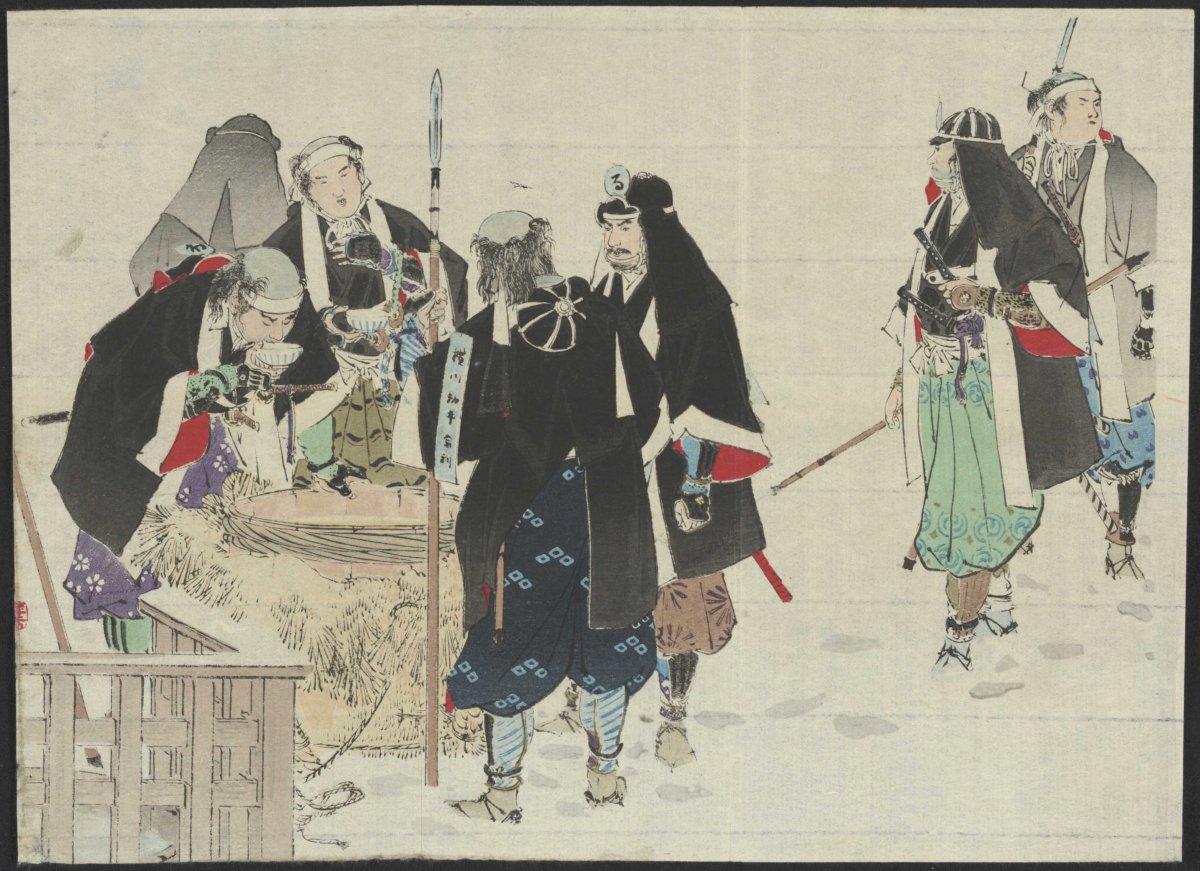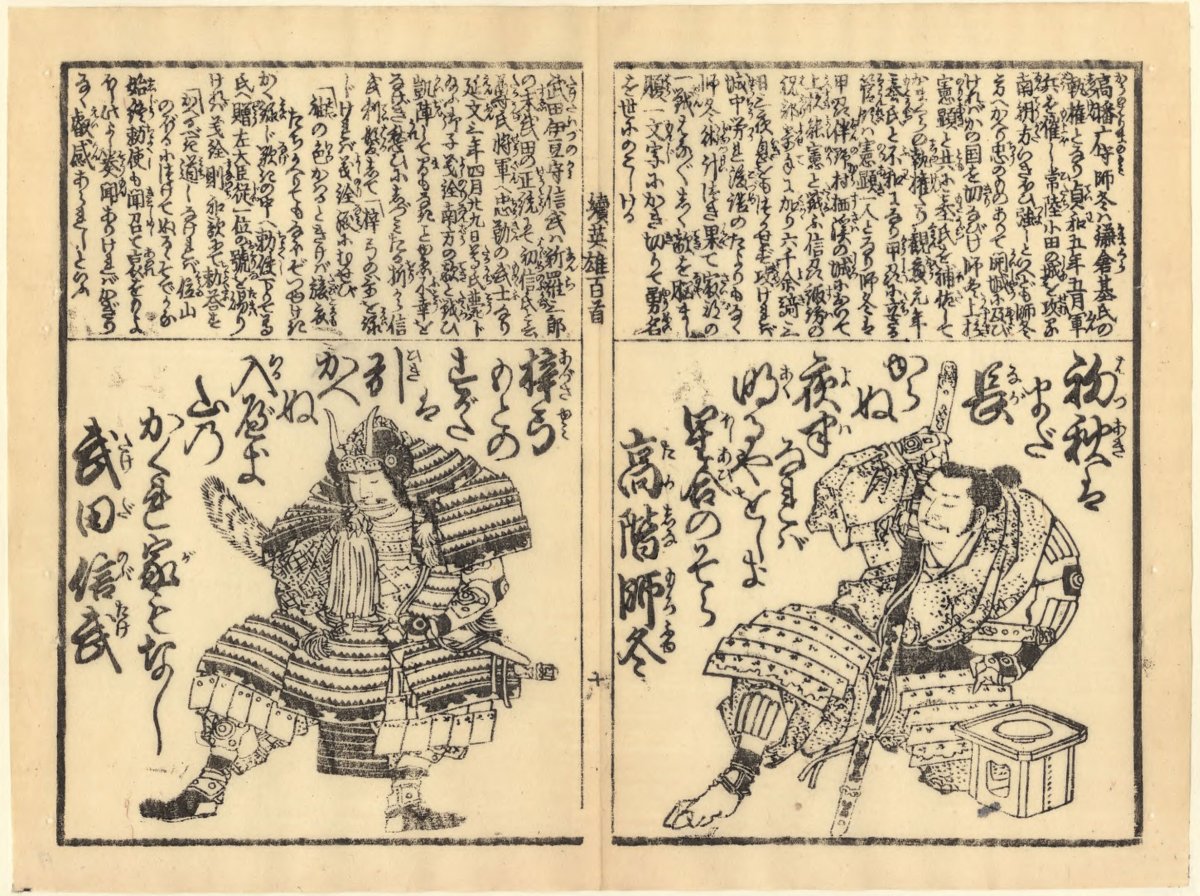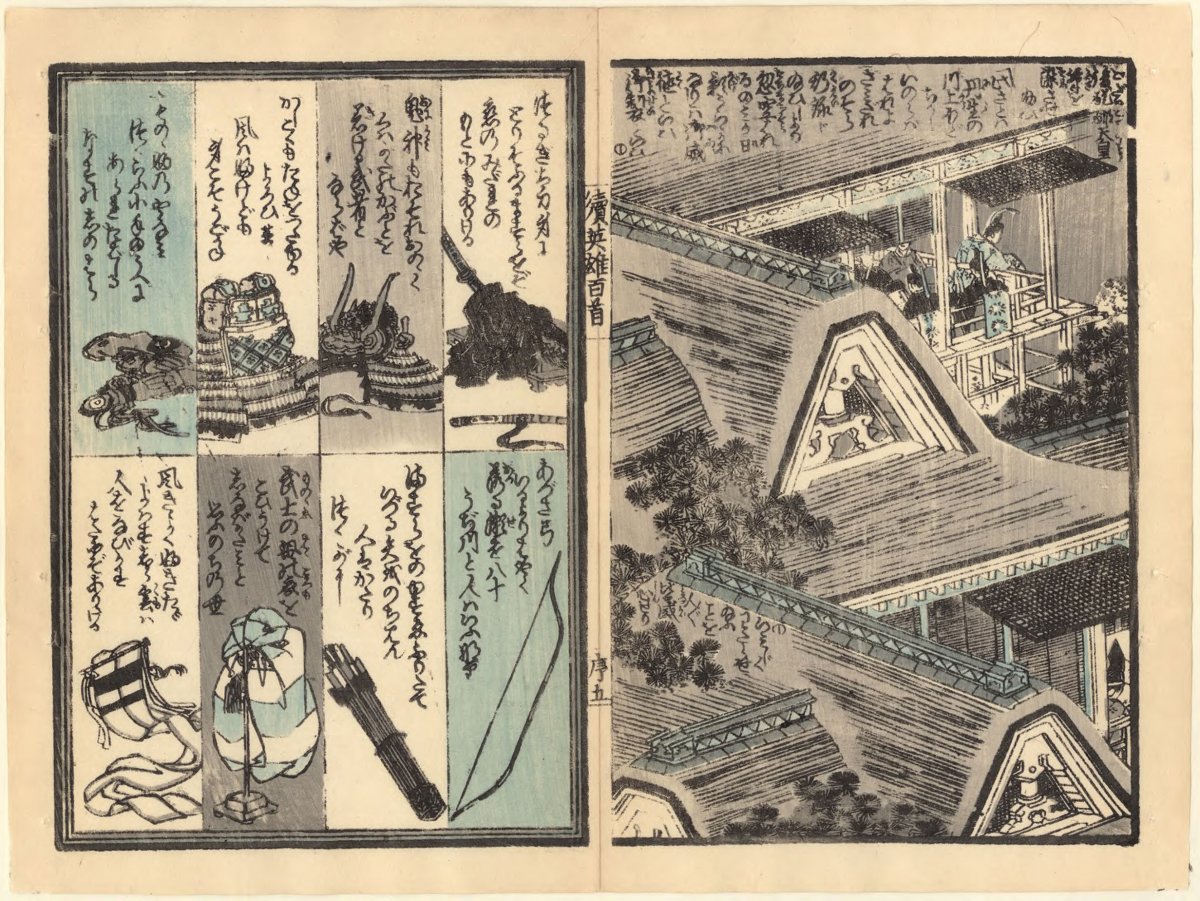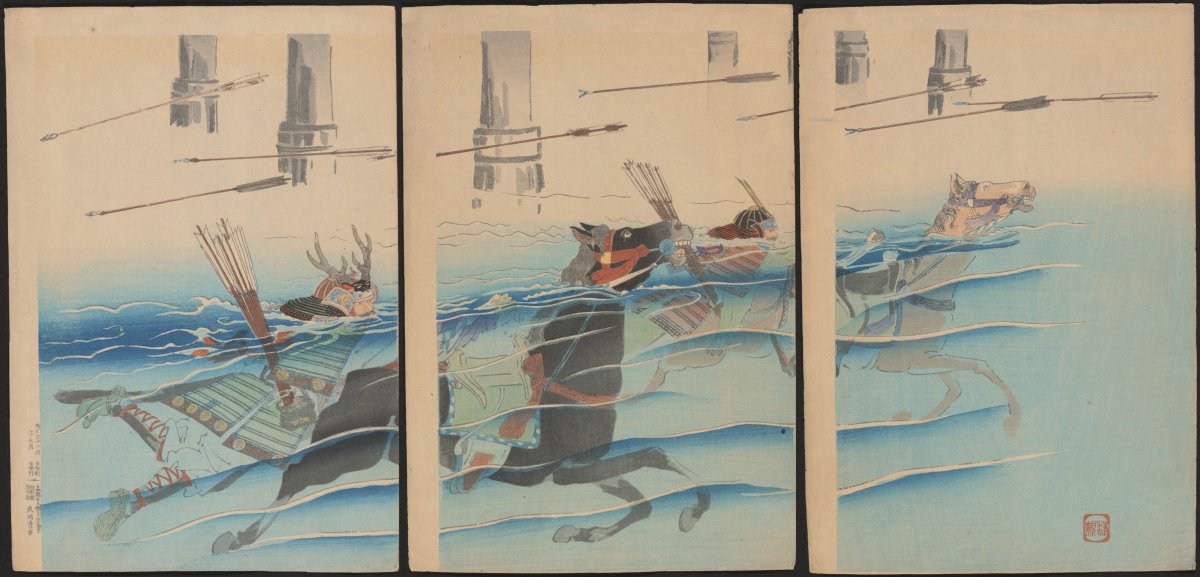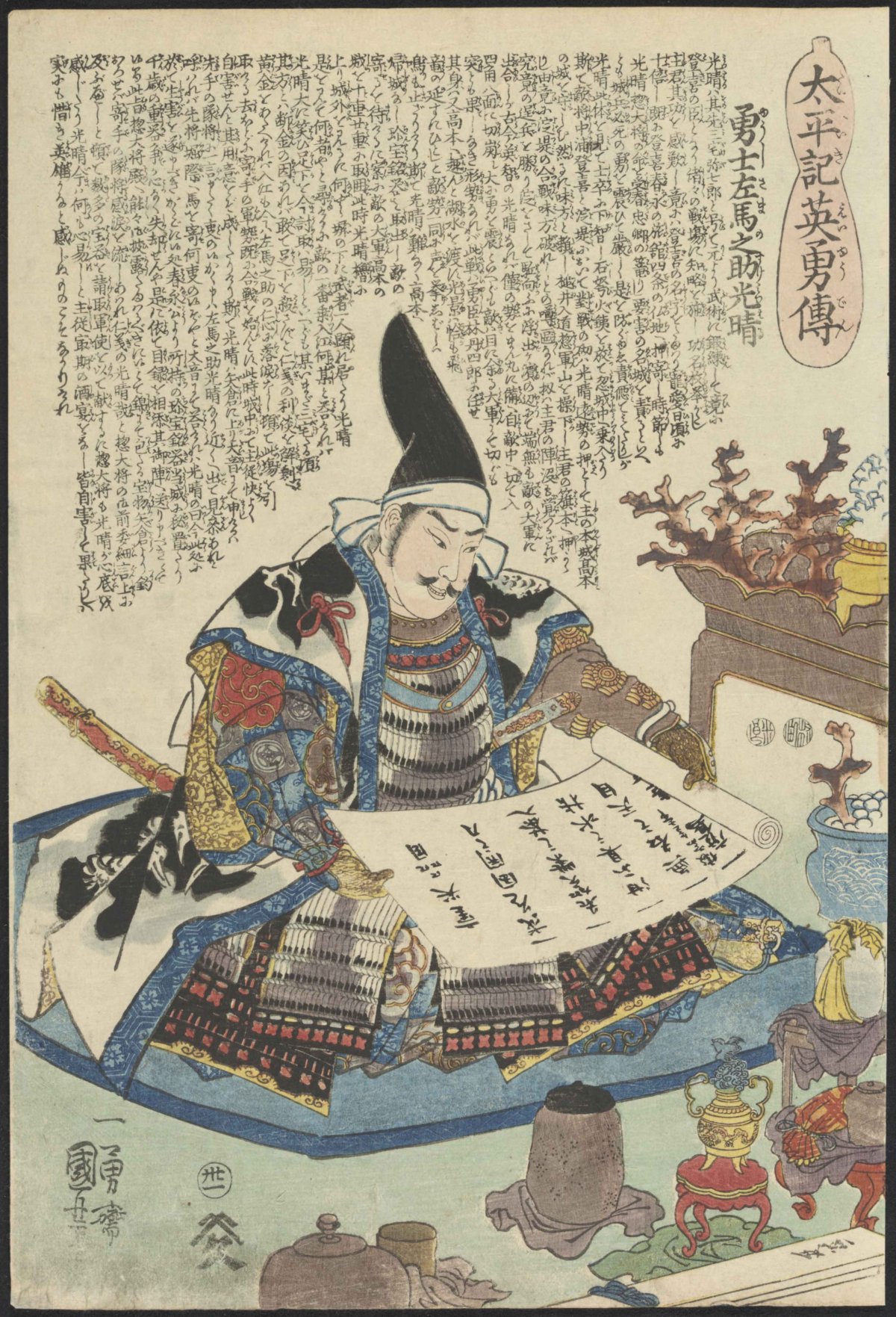Life under the shoguns was highly stratified, with the population falling into distinct classes based primarily on their economic or political functions. The system can be described as having three distinct classes: the ruling elite, the warrior classes, and the peasant classes. As a feudal system, each class gave allegiance, in theory, to those above them in exchange for protection, food and the right to work.
Peasant Classes
For the lowest classes in society, the working classes who made up around 90 per cent of the population, life was a constant cycle of putting food on the table, paying taxes and generally trying to thrive amongst the constant civil unrest. The working classes were further stratified in relation to economic function.
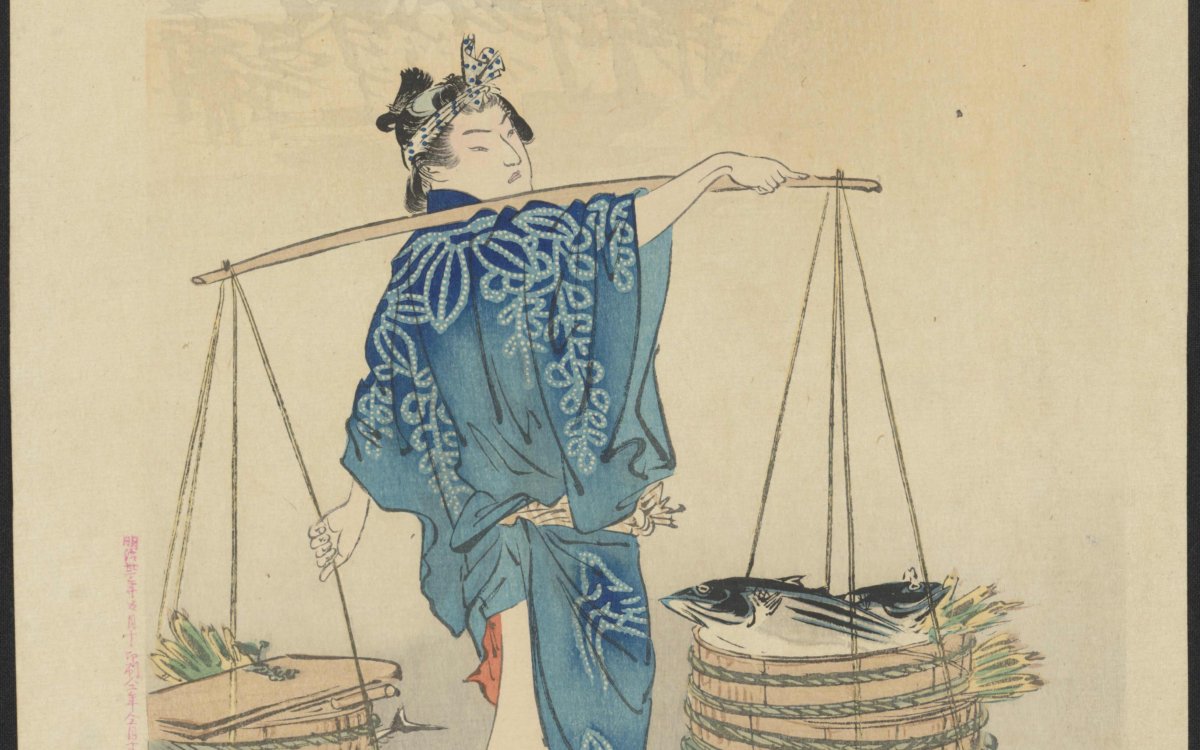
Tai, Kōun, -1936 & 田井耕耘 , -1936. (1899). Odori sugatae [picture]. katsuo uri. http://nla.gov.au/nla.obj-151446085
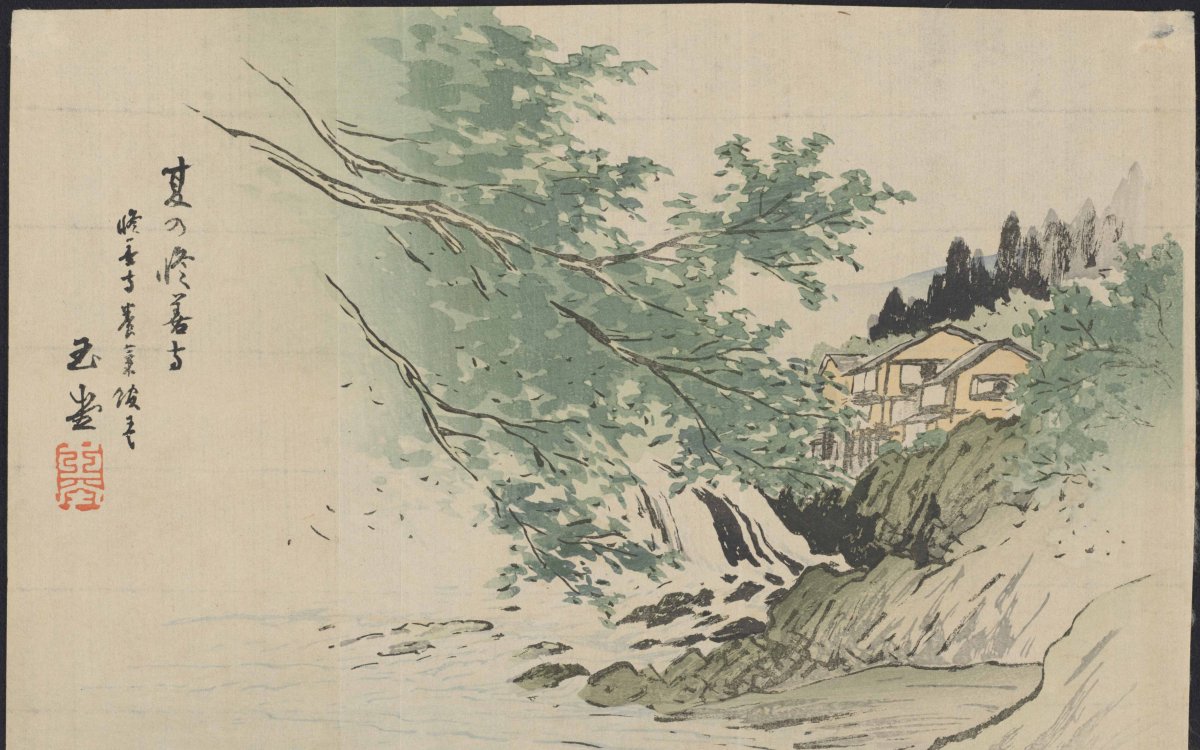
Kawai, Gyokudō, 1873-1957 & 川合玉堂, 1873-1957. (1908). Seiryū [picture]. http://nla.gov.au/nla.obj-152432945
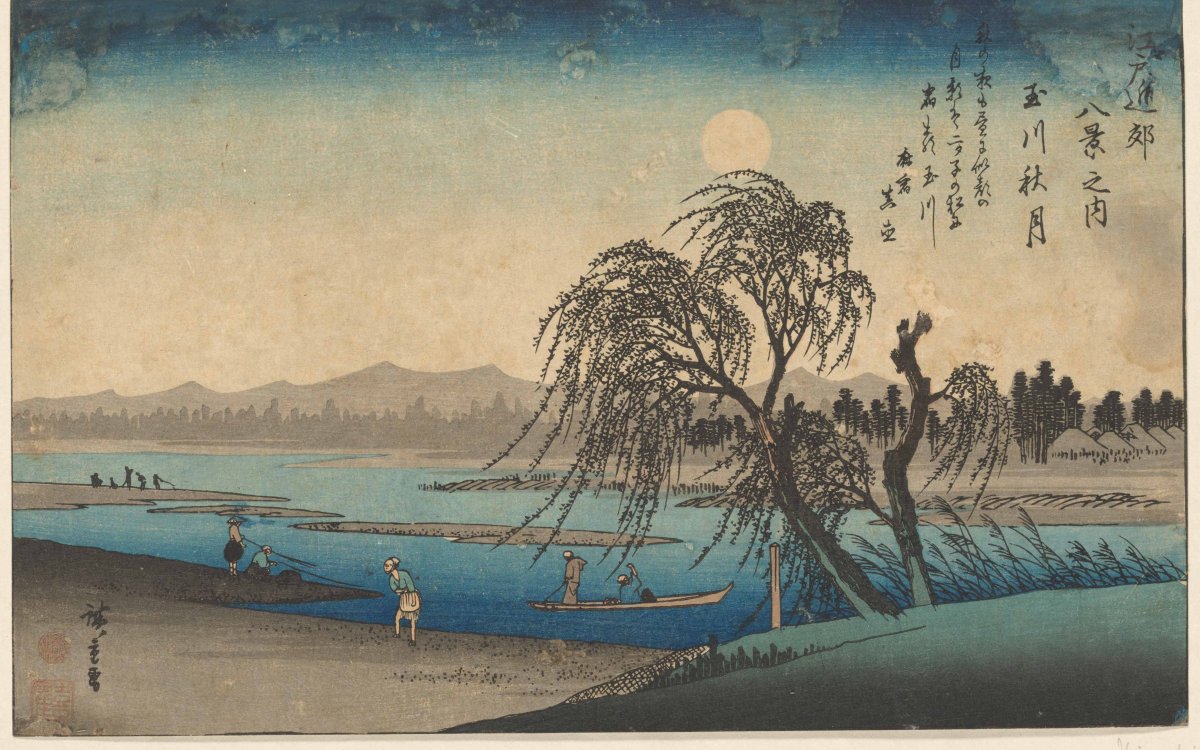
Andō, Hiroshige, 1797-1858 & 安藤広重, 1797-1858. (1830). Edo kinkō no uchi. {picture] . Tamagawa shūgetsu / Hiroshige. http://nla.gov.au/nla.obj-147899180
Primary Producers
Farmers and other primary producers such as fishermen held the highest rank of the working class as they were seen to be the lifeblood of the country, providing rice, fish and vegetables for food, and other resources such as timber for construction.
Artisans
The artisans, skilled craftspeople, followed. These were the people who produced goods, tools and objects for everyday use and for war. Many artisans gained fame through their skill in their particular field such as sword-smithing or pottery.
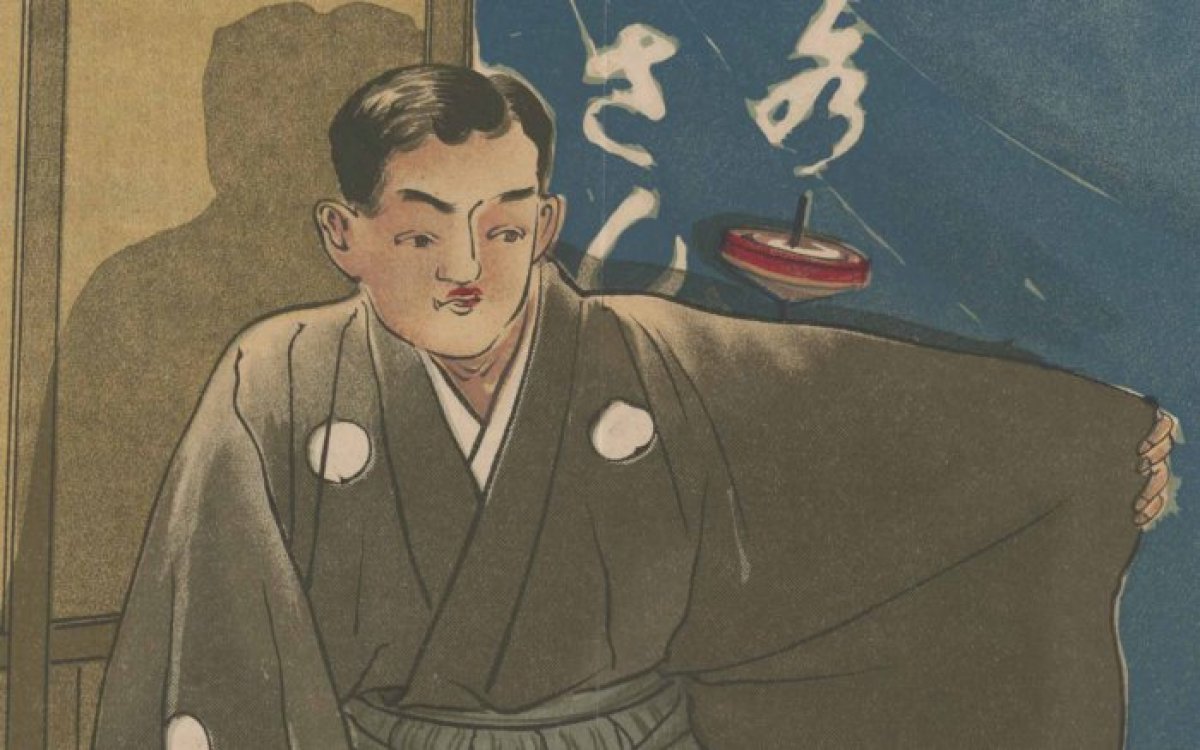
Tashiro, Gyōshū, 1878- & 田代暁舟, 1878-. (1880). Top seller. http://nla.gov.au/nla.obj-190425968
Merchants
At the bottom of the social pyramid were the merchants. They were looked upon with disdain as they profited from the work of others without producing anything. However, from the fourteenth century, local and regional markets were the lifeblood of many communities and were a valuable source of income for local authorities for the tax revenue they could generate.
Hinin -Non-People
There were also a class of people who were not considered worthy of being part of society. These people were the hinin (非人- non-people) or the eta (穢多- Filthy Ones). These people engaged in work that was considered dirty and uncivilised (although sometimes necessary) such as acting, undertaking, butchery, tanning and collecting fertiliser for use on the farming fields.
Warrior Classes
Above the peasant class was the warrior class, which made up Japan’s military from foot soldiers through to the powerful warlords who controlled large domains across the country.
Soldiers
Usually drawn from the peasant classes, foot soldiers (ashigaru) made up the bulk of the Japanese military. The military also included cavalry archers, and later riflemen and artillery units. Soldiers were paid for their service by their daimyo (the warlord of their domain).
The Ronin
A ronin (浪人) was a samurai without a master. Many warriors had a lord or master to whom they held allegiance; however, with the death of their lord or the confiscation of their lord’s property or titles, ronin would be forced to wander the countryside looking for employment as mercenaries.
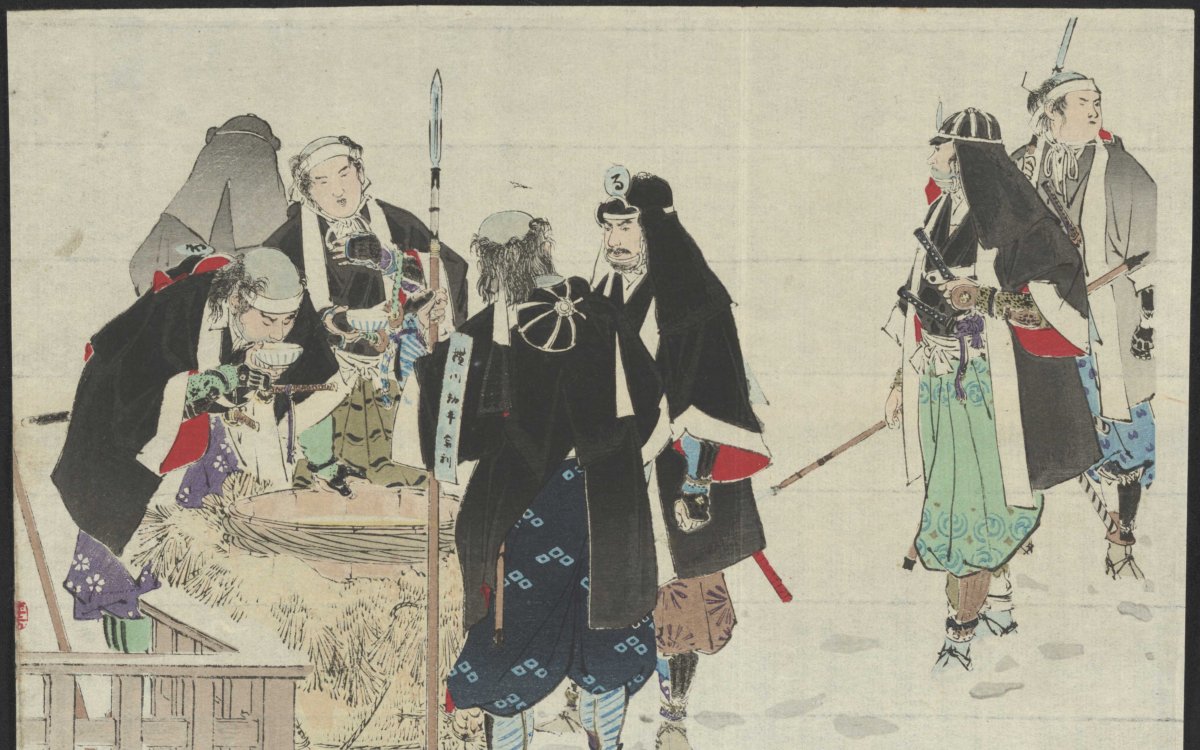
Mizuno, Toshikata., 1866-1908 & 水野年方, 1866-1908. (1900). Gishi hikiage [picture]. http://nla.gov.au/nla.obj-151498025
Many found employment as bodyguards for wealthy merchants or through more nefarious pursuits such as running gambling rings or extortion rackets.
Samurai
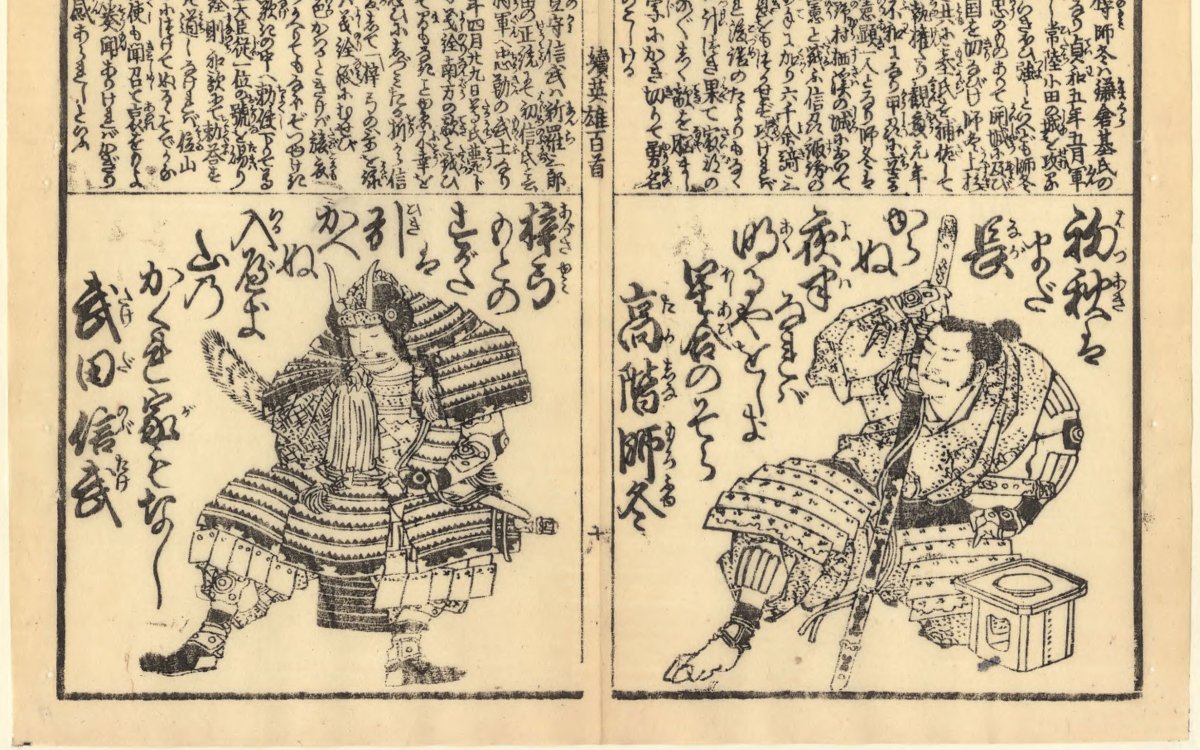
Senryū, 1787-1858 & 川柳, 1787-1858. (1849). Zoku eiyū hyakunin isshu / Ryokutei Senryū shū ; Shomeigashū hitsu. Edo : Yamaguchiya Tb̄ei http://nla.gov.au/nla.obj-50145215
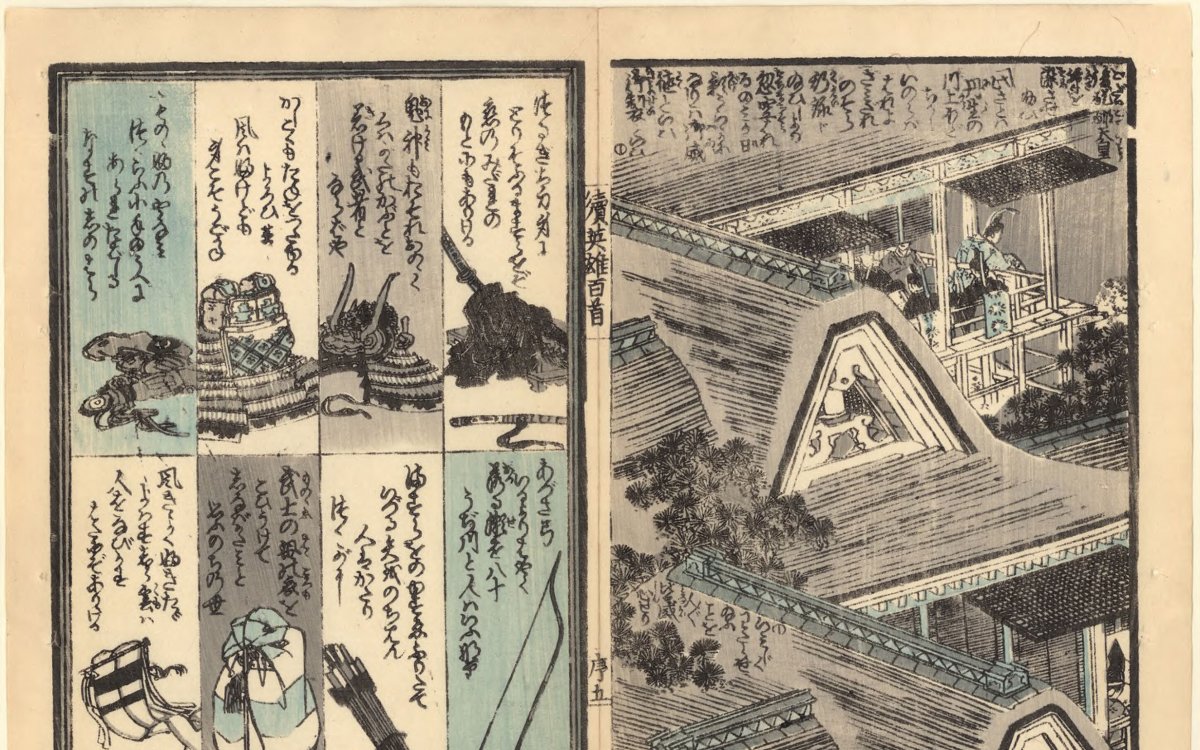
Senryū, 1787-1858 & 川柳, 1787-1858. (1849). Zoku eiyū hyakunin isshu / Ryokutei Senryū shū ; Shomeigashū hitsu. Edo : Yamaguchiya Tb̄ei http://nla.gov.au/nla.obj-50145215
Perhaps one of the most famous groups in Japanese history is the samurai (武士), fierce warriors in elaborate armour serving their lord and master faithfully. The samurai ranked above the ronin in terms of social standing. While both were considered skilled warriors, samurai were warriors with a master to whom they pledged their allegiance. Being connected to a powerful and influential lord brought with it social weight and privilege.
Samurai received payment for their service to their lords and may have been granted land or estates to farm. The samurai were the elite soldiers in their daimyo’s army, with many samurai gaining widespread fame for their skills in combat and as military tacticians. Samurai acted as commanders for the bulk of the domain’s military forces. The samurai were the most influential class in the feudal system, owing to their numbers and due to the sway they held within the military. As the centuries progressed, the samurai class became more and more involved in the politics and bureaucracy of running the domains they served rather than being warriors, although the warrior traditions they adhered to often remained.
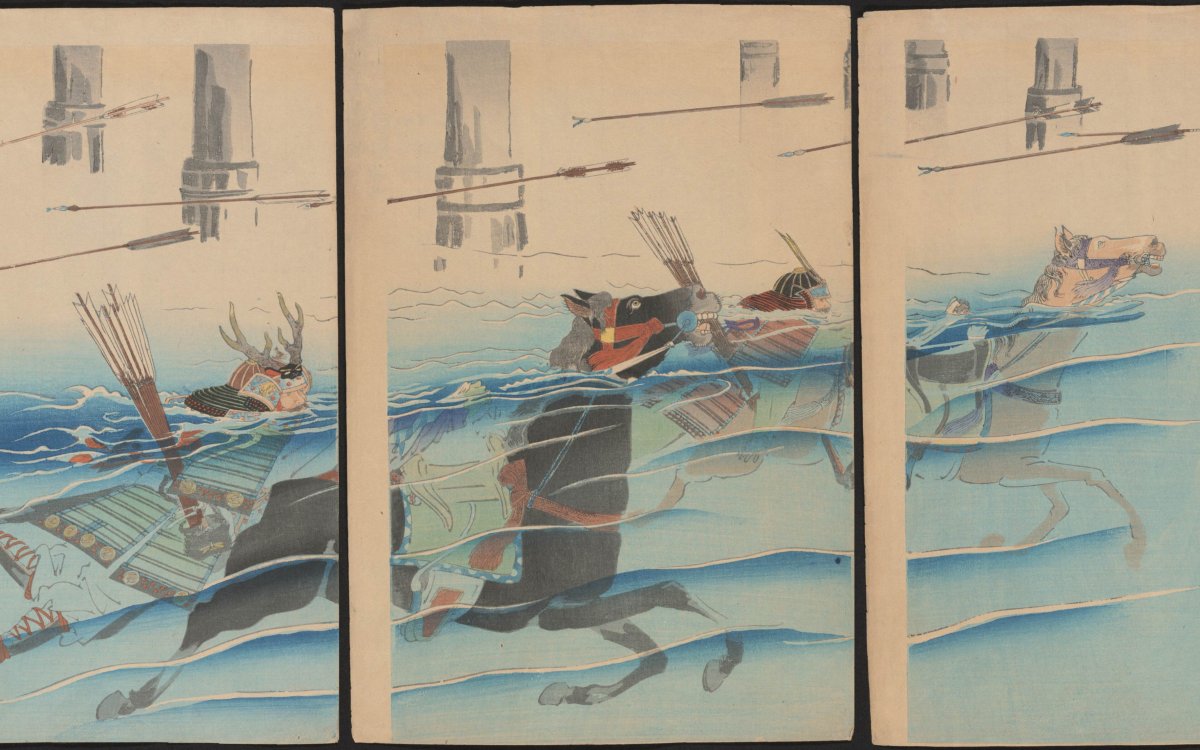
Kobayashi, Kiyochika, 1847-1915 & 小林清親, 1847-1915. [Ujigawa Sasaki Takatsuna Kajiwara Kagesue suibazu ] / Kiyochika. http://nla.gov.au/nla.obj-151545582
Bushido – The way of the warrior
Bushidō, (武士道 – The way of the warrior) was the code of conduct of the samurai and the bushi (武士 – warrior) class under the feudal rule of the shoguns. By the 1800s, Bushidō was the basis of the ideal ethical and moral way of life for the majority of Japanese society. The Bushido code varied throughout the centuries, but its one unchanging ideal was military spirit and fearlessness toward the enemy in battle. For those who were not warriors, frugal living, kindness, honesty, and personal honour were also highly regarded, as was fulfilling one’s duties to parents and family. However, the most important obligation of any person was to his lord and the emperor. Formal instruction in Bushido practices were abandoned after World War 2 (1945); however, elements of the Bushido code remain in the practice of Japanese martial arts and in the sport of sumo wrestling.
Bushido – The way of the warrior
Bushidō, (武士道 – The way of the warrior) was the code of conduct of the samurai and the bushi (武士 – warrior) class under the feudal rule of the shoguns. By the 1800s, Bushidō was the basis of the ideal ethical and moral way of life for the majority of Japanese society. The Bushido code varied throughout the centuries, but its one unchanging ideal was military spirit and fearlessness toward the enemy in battle. For those who were not warriors, frugal living, kindness, honesty, and personal honour were also highly regarded, as was fulfilling one’s duties to parents and family. However, the most important obligation of any person was to his lord and the emperor. Formal instruction in Bushido practices were abandoned after World War 2 (1945); however, elements of the Bushido code remain in the practice of Japanese martial arts and in the sport of sumo wrestling.
The Daimyo

Utagawa, Kuniyoshi, 1798-1861 & 歌川国芳, 1798-1861. (1847). Taiheiki Eiyūden. Yūshi Sama-no-suke Mitsuharu : [picture]. http://nla.gov.au/nla.obj-151499223
The daimyos, powerful hereditary warlords, administered large tracts of lands awarded to them (or their family line) by the shogun. These large territories were known as han (藩 – Domain).
Han
A daimyo was awarded a domain which was within the borders of an existing province (国 – kuni). However, the political power and military influence of a daimyo’s domain often extended beyond provincial borders and, in some cases, a domain included several provinces. The powerful Tokugawa family’s domain occupied a quarter of Japan. The remaining land was divided among 295 other daimyos, various temples, and land belonging to the imperial court.
Han
A daimyo was awarded a domain which was within the borders of an existing province (国 – kuni). However, the political power and military influence of a daimyo’s domain often extended beyond provincial borders and, in some cases, a domain included several provinces. The powerful Tokugawa family’s domain occupied a quarter of Japan. The remaining land was divided among 295 other daimyos, various temples, and land belonging to the imperial court.
The daimyos, while nominally loyal and acting under the authority of the central government and the shogun, acted with almost complete autonomy within their own domains. They managed taxes, transport and infrastructure and, most importantly, commanded their own military forces. Throughout the centuries of shogun rule in Japan, the shogunal government relied on the allegiance and support of the daimyos both politically and militarily to stay in power and exercise control.
There are many instances in history where a daimyo or an alliance of daimyos turned against the shogun. Some of the most influencial include:
· 1333: The Kamakura Shogunate fell when political infighting among rival families lead to a short-lived re-establishment of imperial rule known as the Kenmu Restoration.
· 1573: During the Sengoku Jidai, the Warring States period, Oda Nobunaga overthrew the ruling Ashikaga Shogunate after a campaign of unification.
· 1868–1869: The Tokugawa Shogunate was abolished after years of political pressure and conflict, culminating in the Boshin War and the Meiji Restoration
There are many instances in history where a daimyo or an alliance of daimyos turned against the shogun. Some of the most influencial include:
· 1333: The Kamakura Shogunate fell when political infighting among rival families lead to a short-lived re-establishment of imperial rule known as the Kenmu Restoration.
· 1573: During the Sengoku Jidai, the Warring States period, Oda Nobunaga overthrew the ruling Ashikaga Shogunate after a campaign of unification.
· 1868–1869: The Tokugawa Shogunate was abolished after years of political pressure and conflict, culminating in the Boshin War and the Meiji Restoration
The Shoguns
Shogun is a contraction of the title Sei-i Taishōgun (征夷大将軍 – Commander in Chief of the expeditionary force against the barbarians, sometimes translated into English as Generalissimo). The shogun was the supreme military and political commander of Japan. For almost 700 years, the shoguns were the de facto heads of state, administering trade, domestic and foreign policy, and issuing national laws.
The shogun and his government claimed to derive their power from the emperor who nominated them to rule. The shoguns maintained this pretence as a piece of shrewd political propaganda. In theory, the claim was correct; the emperor was the supreme ruler of Japan and all those below him acted and existed within his favour. However, in reality, the emperor was a ceremonial figurehead: he and the court held very little power and had little say in the running of the nation – the shogun held the reins of power. By declaring this connection to the divine emperor, shoguns and bakufu legitimised their rule in the eyes of the population. The relationship between the shoguns and the emperor was ever changing, informed by court intrigue, war, new policies and the personal feelings of individual shoguns. The shogun was not an elected position; the population had no say in who became shogun after the death of the incumbent.
The Emperor
At the top of the social order was the emperor. The role of emperor was a hereditary position. Under the shoguns, the emperor’s power and influence was severely restricted to managing the ceremonial and religious concerns of Japan from the Imperial Palace in Kyoto. Despite this curbing of authority, the influence the emperor held on the political stage rose and fell throughout history, with some emperors being more vocal and engaged in politics than others. Some emperors were members of a shogun’s family, gaining them favour, and some emperors had powerful daimyos, at odds with the shogunate, to support them and their right to sole rule. It would not be until, in the aftermath of the Boshin War, that the Emperor was restored to power in 1868–1869.
Divine Lineage
Japan’s mythological origin story tells of the sun goddess, Amaterasu (天照大御神- – Amaterasu-Ōmikami), who inherited the Earth and sent her descendants to rule it. Amaterasu’s great-great-grandson, Jimmu (神武) became Japan’s first Emperor (天皇 – tennō) in 660BCE. According to traditional belief, the Japanese imperial line are direct descendants of the sun goddess. Just as the shoguns maintained their connections to the emperor to legitimise their rule, so did the emperor and court maintain this connection to the gods to justify their divine right to rule.
Divine Lineage
Japan’s mythological origin story tells of the sun goddess, Amaterasu (天照大御神- – Amaterasu-Ōmikami), who inherited the Earth and sent her descendants to rule it. Amaterasu’s great-great-grandson, Jimmu (神武) became Japan’s first Emperor (天皇 – tennō) in 660BCE. According to traditional belief, the Japanese imperial line are direct descendants of the sun goddess. Just as the shoguns maintained their connections to the emperor to legitimise their rule, so did the emperor and court maintain this connection to the gods to justify their divine right to rule.
Activities
- Have the students research a class of Japanese society in the Kamakura, Ashikaga or Tokugawa Shogunates. What was life like for these people? Who did they pay their taxes to? Could they move up in society? Could they move down? What was their life expectancy and diet like? Have the students compose a creative writing piece about a fictional person from that strata of society. Encourage the students to use some Japanese terminology throughout their story.
- Ask students to compare the relationship between the emperor and the shoguns to a modern constitutional monarchy. What are the differences and similarities?
- Ask the students to assess the impact of political propaganda in legitimising a government or a ruler’s position. What examples can be found from shogunate Japan? What examples can be found today?
